Booth S11215
Typically, when people think colored concrete, a couple things come to mind. First, they think of residential pool decks, patios, and more. Second, most people will be reminded of large commercial projects such as majestic office buildings and fun theme parks. But those are hardly the limits of colored concrete.
Infrastructure, industrial structures, and other less ”glamorous” projects can make excellent use of colored concrete. Color can add different properties and performances to the concrete. At standard loadings, iron oxide pigments – the kind used most commonly in colored concrete – will not adversely affect the strength or durability of concrete. Integral iron oxide pigments are UV-stable and long lasting. They will not fade or wash out over time (note: some pigments, such as carbon black, may fade over time under certain conditions). The applications can range from entirely decorative to strictly functional. Here are a few possibilities:
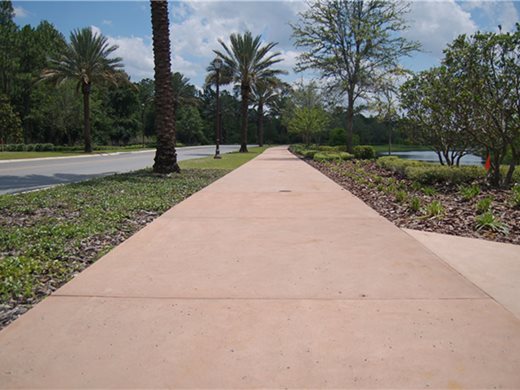
Concrete paved roads and parking lots account for a large portion of visible concrete in modern urban areas. This ubiquity and visibility makes them a natural place to use color.
As one would expect, color can be used to spruce up concrete pavement. Using color as an architectural component can add organic, premium, or rustic appeals to pavement, separating it from the drab gray concrete that we have come to expect in the concrete jungle. In more practical applications, color is often used to obscure wear or soiling. Dark colors are frequently used hide tire marks and oil stains or to match fresh placements with older adjacent slabs.
Color also affects the thermal properties of concrete. When exposed to the sun, dark colored concrete will absorb sunlight. This will later be radiated in the form of heat. Conversely, lighter colored concrete will reflect sunlight, staying cooler. This is quantified for some colors in a Solar Reflectance Index (SRI). How you use these properties is entirely dependent on your application and goals. For example, concrete placed in colder regions may benefit from a dark color, which will radiate heat at night and reduce the likelihood of ice or snow accumulation. A warmer, sunnier climate could call for lighter colored concrete to reflect sunlight and reduce the heat island effect.
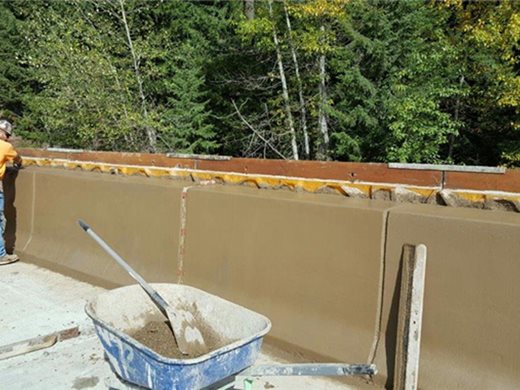
Imagine you chose to drive the scenic route. Gorgeous natural vistas surround your car. Interrupting your view, however, is a drab gray concrete barrier. Barriers, median dividers, and roadside walls are necessary for roadway safety and roadside quality of life. But that necessity does not have to come at the cost of appearance.
Integral color can be used in precast and slipform applications. Choosing a color or colors that compliments the surroundings can make these structures blend very well. For example, in a mountain road, you will want to select a buff or tan color that closely matches the natural rock tones and hues. A forest landscape might call for browns or reds that complement the surrounding trees. Some applications can even be textured to further blend in or appeal to the natural surroundings.
This use of color can go beyond blending into natural landscapes. Urban barriers and dividers might use color to stand out. By using more vibrant or clashing colors, barriers will stand out from their environment. This could potential be used to improve visibility and safety or to add modern, artistic visual appeal.
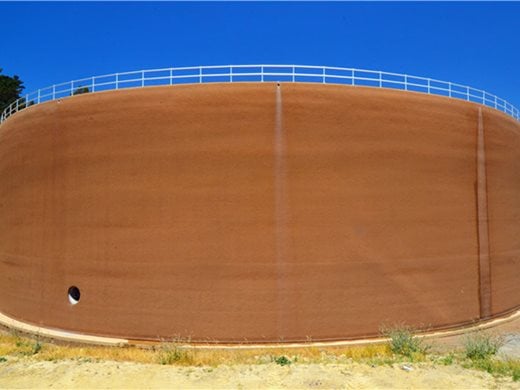
Many industrial structures, such as storage tanks, are held in contempt for supposedly being unsightly. This can be remedied with a simple addition of color. Integral color is compatible with most common methods of placing concrete – including shotcrete, cast in place, and precast concrete. By adding color to these applications, you can obscure stains and tarnishing for a cleaner and more easily maintained appearance. Color can also be used to help blend the structure into the surrounding area or turn them into a modernist piece of architectural art.
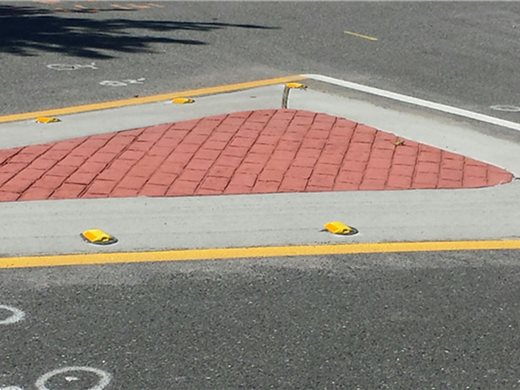
Different colored aspects of roads improve safety as well as visual appeal. Most of the time, these markers are painted. Paint on roadways wears, fades, chips, and disappears over time, especially with wear and exposure to the elements. As these markings fade and disappear, it presents confusing and unsafe road conditions.
In some applications, colored concrete may be the solution. Some municipalities use colored concrete for medians and crosswalks for this very reason. Unlike painted markings, the integrally colored concrete will not fade and the color will not otherwise deteriorate so long as the concrete is in place.
Often using a red pigment, these sections stand out against the uncolored concrete or asphalt pavement. Even from a distance, these sections of colored concrete are visible to motorists. In downtown, historical, tourist, or commercial districts, some cities will even incorporate these colored aspects into a decorative scheme. Using stamps, patters, or stencils can add additional flair and enhance historic or themed areas.
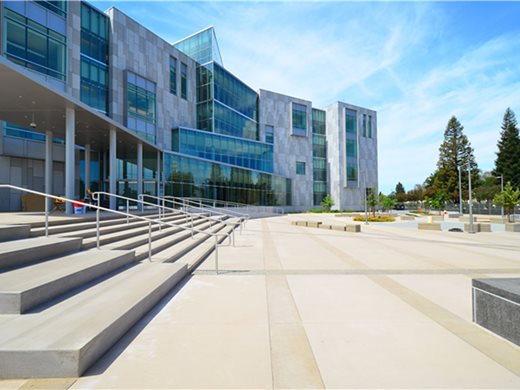
Public gathering and recreation spaces such as these are a natural fit for colored and decorative concrete. As public, high traffic spaces, durability is placed at a premium. Given their purpose, visual attractiveness is also of primary concern. This places colored and decorative concrete in the position of being one of the best materials of choice.
Creative addition of color can overcome many of the challenges posed by this kind of project. Accessibility and ADA considerations may limit the use of pavers and stamped concrete in public spaces. Uneven textures may be problematic for people with disabilities, wheelchairs, or other impairments. By using ribbons of colored concrete, decorative saw-cuts, and accessibility-friendly finishes such as exposed aggregate and stencils, you can create beautiful spaces that can be enjoyed by anyone.
Here are a few things to consider when coloring concrete for these applications:
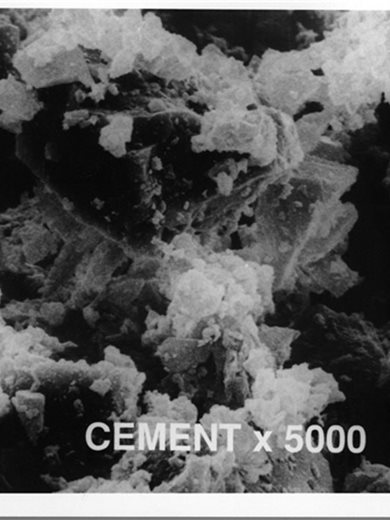
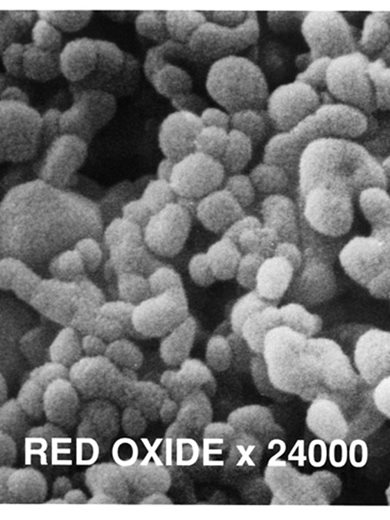
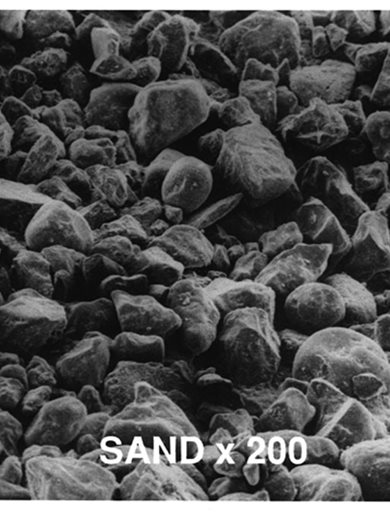
In normal doses, integral pigments do not affect the strength or performance of concrete. Concrete performance will only start noticeably degrading at pigment dosages of roughly 10% or higher. Optimum pigment dosage rates are generally between 2% and 4%, with color saturation occurring at 7%.
Iron oxide pigments will not fade or wash out over time. Exposure to the elements, rain, and UV light should not affect iron oxide pigments. Use of calcium chloride accelerators, high slump mixes (over 4”), or color loadings under 1% may lead to noticeably uneven coloration. Make sure mix design and water content are appropriate for the pigment.
Carbon black pigments may wash out, especially if left unsealed or exposed to rain and moisture. Carbon black may also reduce air content in concrete.
Make sure your chosen pigment is ASTM C 979 compliant.
Color hardeners – also called dry shake hardeners – have a place in these kind of projects. Color hardeners can produce consistent colors and some lighter colors more easily than integral pigment. However, due to the demands placed on concrete in these kinds of applications, it is not generally recommended to use color hardeners on their own. Combine the use of a color hardener with a similar integral pigment in case the concrete becomes chipped, cracked, or undergoes significant abrasion.
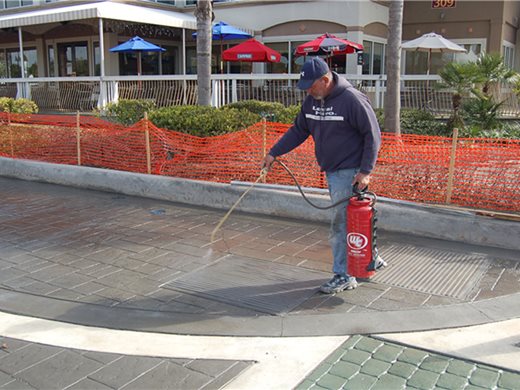
A number of other coloring methods can be used in conjunction with integral color and color hardeners for varied effects. Stains, dyes, and other coloring materials are available for further embellishment, design work, and decoration. These products may have different maintenance requirements than integral color or color hardeners, so take this into consideration.
Explore impressive concrete installations to find inspiration for your next project.
Find out how much color and fiber you'll need for any size project.